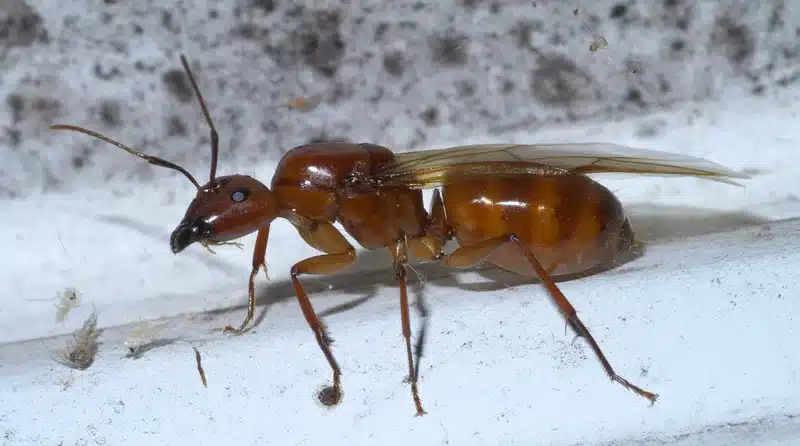Spotting a carpenter ant with wings near your window can feel alarming. I’ve been a licensed technician since 2015, and I know these swarmers often mean hidden wood damage. Just like the termite bulge I found in Alexandria, winged ants can warn of bigger troubles.
Taxonomy and Regional Species of Carpenter Ants With Wings
In VA/MD/DC, the main structural pest is Camponotus pennsylvanicus. Other species include C. castaneus and C. nearcticus but they less often invade homes. For more on local ants, see Kinds of Ants: Identifying Different Types in DC Metro.
Carpenter Ant Caste System & When Wings Appear
Worker, Male, and Queen Castes
Workers stay wingless and build galleries. Males and virgin queens become alates. After mating, males die and queens start new nests.
Alate Production & Colony Maturity
Colonies make alates at around 2,000 workers. This usually takes 3-6 years. Alates wait for warm, humid days to start the mating flight.
Identifying Carpenter Ant With Wings: A Detailed Visual Guide
Size and Body Structure
Queen alates measure ½-¾ inch. Males span about ⅓-½ inch. Look for bent antennae and a single-node waist.
Wing Characteristics
Front wings outsize hind wings and have few veins. They show a smoky-brown tint. You might find dropped wings on window sills.
Distinctive Thorax Shape
Alates have a bulky thorax full of flight muscles. Workers show an evenly rounded profile. For a full chart, check Ant Identification Chart: Types of Household Pests & Control.
Carpenter Ant With Wings vs. Termites: Key Differences
A carpenter ant with wings has elbowed antennae and unequal wing pairs. Termites have straight antennae and equal wings in length. You can learn more in Termites vs Flying Ants: How to Tell the Difference.
Seasonal Swarming Biology in the Mid-Atlantic
On the first 70°F day after rain, outdoor swarms appear May-July. Indoors, warm areas can trigger flights in February.
What does the science say?
Mature colonies can release 200-400 alates on warm days, according to NC State Extension. Local NOAA forecasts help predict swarm windows.
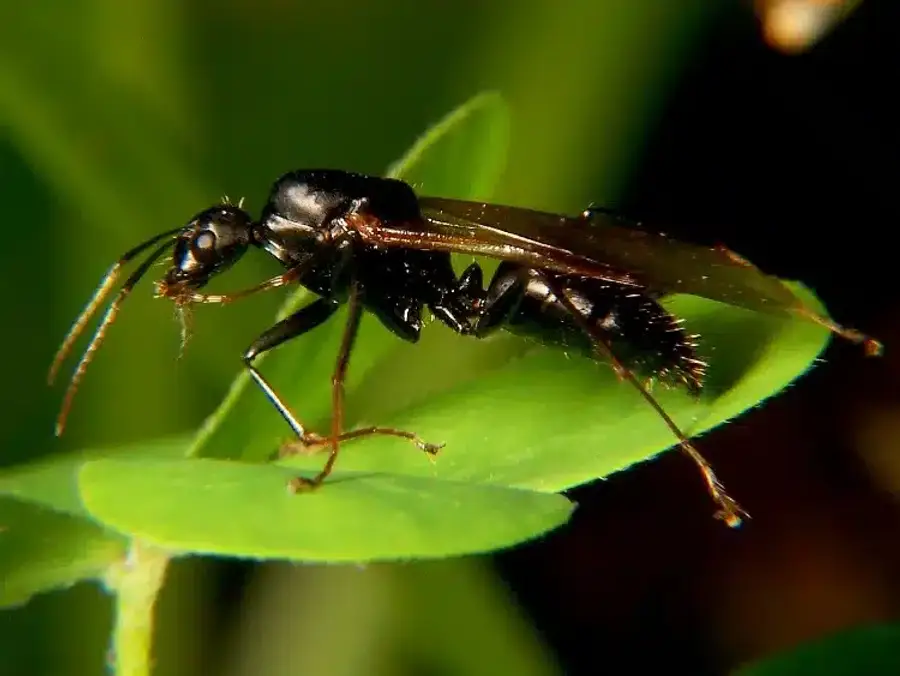

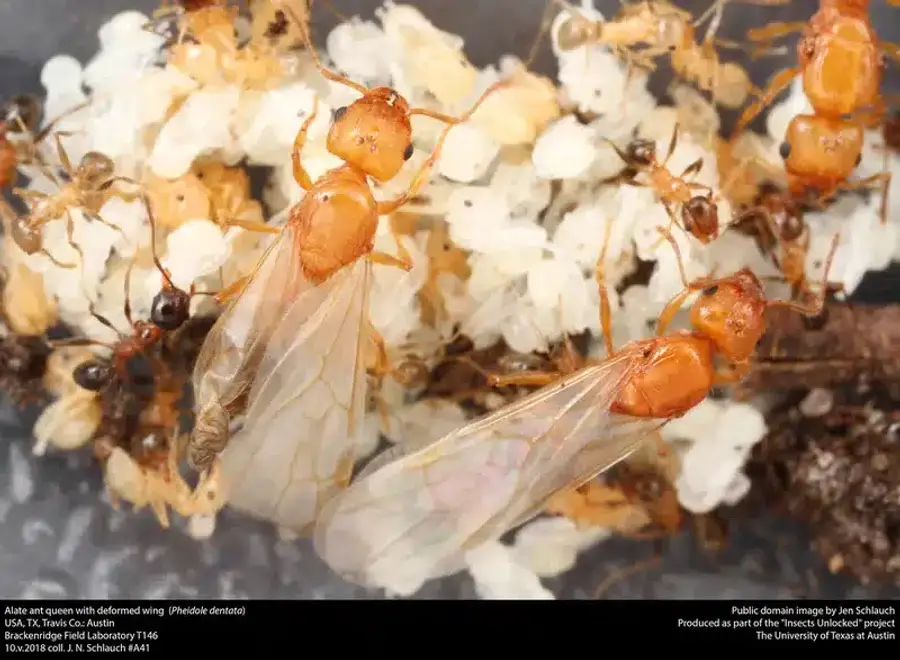
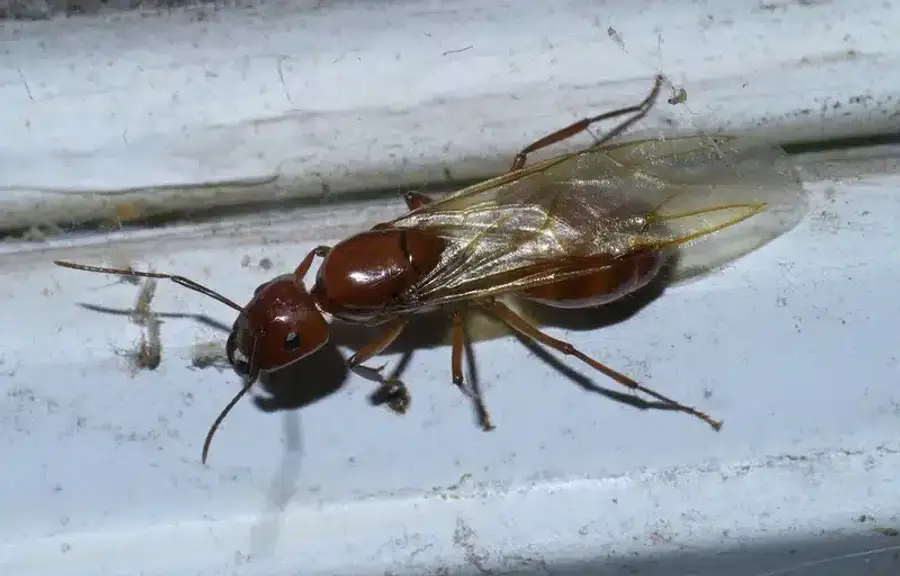
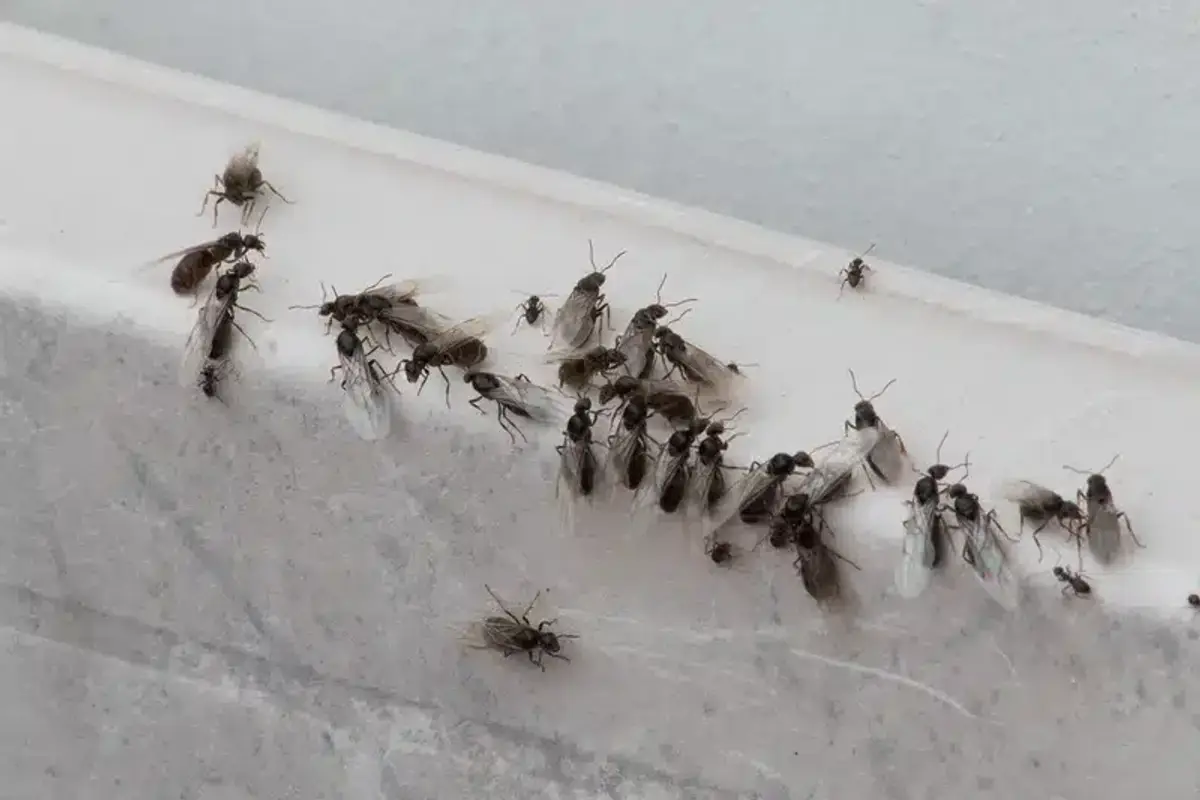
Full Life Cycle and Colony Growth Timeline
Egg to Adult Development
Eggs hatch into larvae, then pupae, then adults. This can take several months to complete. See Ant Lifespan: Development Stages and Treatment Tips for details.
Satellite Nest Formation
Mature colonies set up satellite nests in voids. These spots lack the queen but hold workers and brood. This creates hidden entry points.
Nest Architecture & Movement Patterns of Carpenter Ant With Wings
Parent nests start in damp or decayed wood, such as porch bases and sill plates. Galleries are smooth, sand-papered with no soil lining. Frass, or shredded wood bits, piles under exit holes.
Mechanics of Carpenter Ant Damage & Structural Impact
Carpenter ants hollow wood by mechanical removal, not by eating. Galleries grow slowly but can weaken beams over years. Often, moisture-damaged wood from fungi fails faster.
Moisture, Fungi & Structural Risk Factors in VA/MD/DC Housing
Homes with poor drainage, flat roofs, or synthetic stucco often trap moisture. Leaks and vegetation contact boost rot. According to the University of Maryland Extension, these spots invite colonies.
Early Warning Signs of Carpenter Ant With Wings Infestation
Key Warning Signs
- Rustling sounds in walls at night
- Sawdust-like frass piles under windows
- Nighttime foragers in kitchens or pantries
- Winged ants near lighted windows
If you spot these, inspect for trails and entry points.
Carpenter Ant With Wings vs. Termites: Structural Impact Comparison
Termites eat wood, while carpenter ants hollow it. This means inspection and treatment differ. Baits along foraging trails work better than simple perimeter sprays.
Ecological Role of Winged Carpenter Ants Outdoors
Carpenter ants help break down deadwood and create cavities for wildlife. They also herd aphids to gather honeydew. These roles boost forest health.
Prevention & Building-Science Strategies Against Carpenter Ant With Wings
Moisture Management & Building Repairs
What does research recommend?
A UC IPM pest note recommends sealing wood-to-soil contact and improving ventilation.
Seal roof leaks, improve drainage, and add vents. Repair wood rot with borate-treated materials.
Vegetation and Wood Contact Reduction
Keep plants and firewood off siding. Eliminate earth-to-wood contact.
Chemical & Baiting Approaches
Use EPA-approved products vetted by our team. Non-repellent insecticides and baits on trail paths work better than barrier sprays. For more tips, see How To Keep Ants Away: Pro Techniques vs DIY Ant Control.
Myth-Busting: Common Misconceptions About Carpenter Ant With Wings
Carpenter ants do not eat wood like termites. Instead, they hollow wood to build galleries. Swarmers leave wings but cause no post-flight damage.
Research Frontiers & Data Gaps in Carpenter Ant With Wings Studies
Emerging acoustic sensors may detect chewing early. Genomic research explores ant-fungi gut links. Warmer winters may push swarm dates earlier.
Conclusion and Next Steps
Catching a carpenter ant with wings early can save thousands in repairs. Remember the signs, manage moisture, and seal entry points. If you suspect an infestation, call us for inspection and targeted treatment.
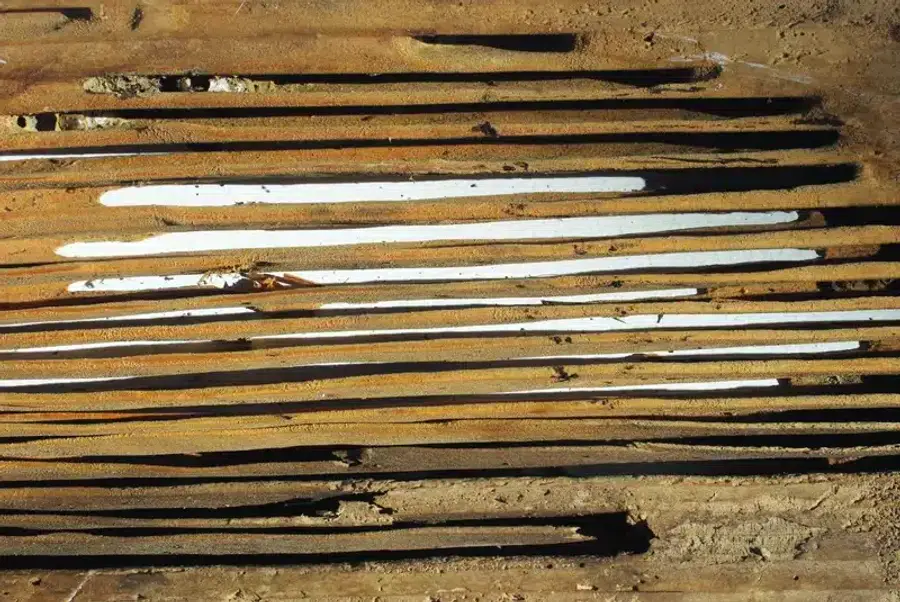
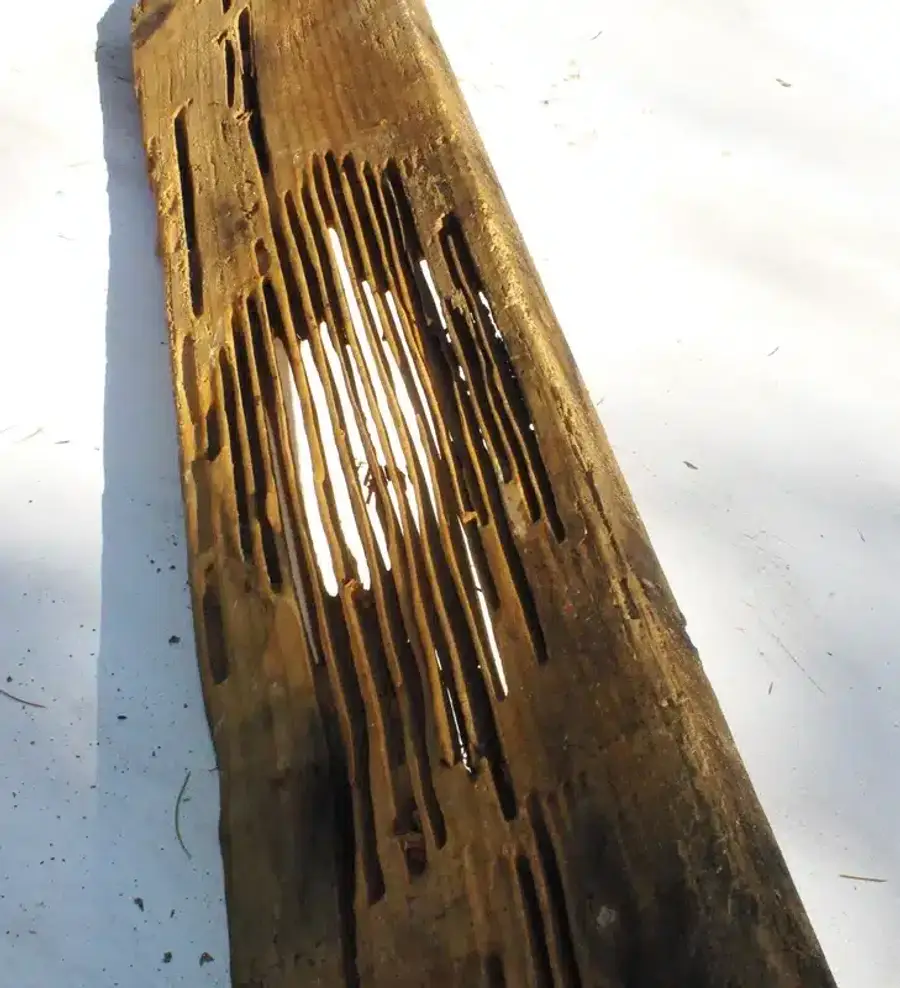
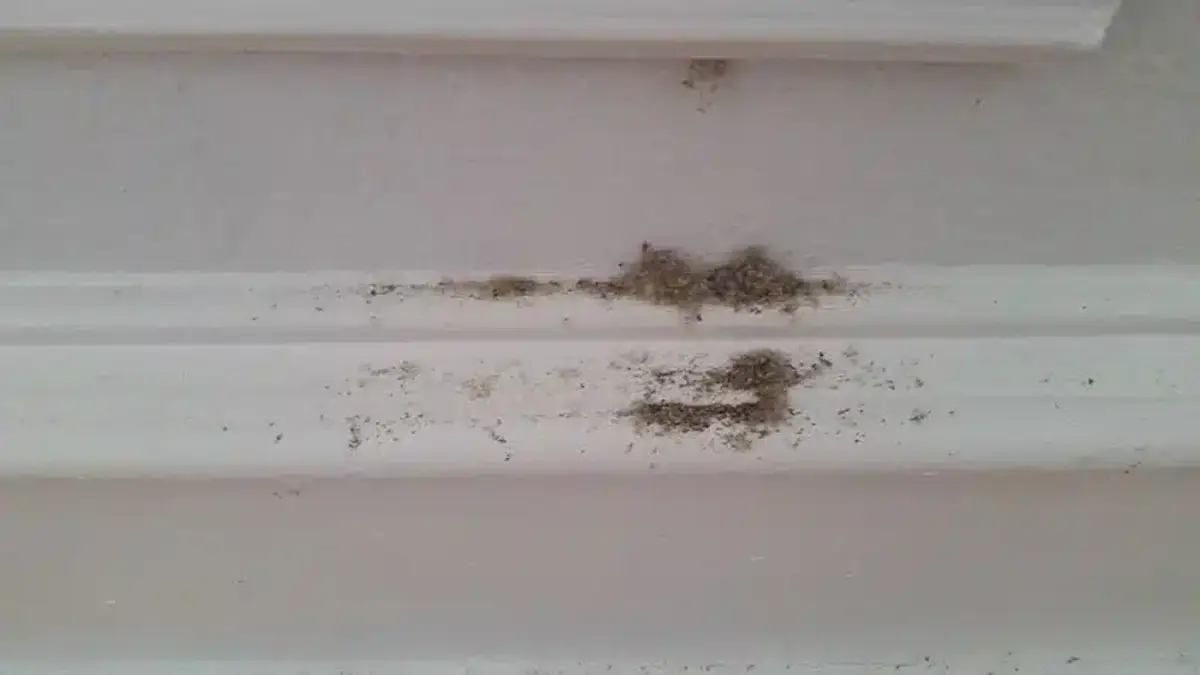
Frequently Asked Questions
What do carpenter ants with wings look like?
+
Carpenter ant swarmers are ½-¾ inch long. They have bent antennae, a skinny waist, and unequal wing pairs. Their front wings shade smoky brown.
Are carpenter ants with wings harmful to my home?
+
Yes. **Winged swarmers** show a mature colony has hidden galleries. Over time, these tunnels weaken structural wood.
How can I tell if winged insects are carpenter ants or termites?
+
Ants have elbowed antennae and unequal wing pairs. Termites have straight antennae and equal wings in length.
When is carpenter ant swarming season in the mid-Atlantic?
+
Most outdoor swarms happen May-July on the first warm, humid days. Indoor flights can occur in heated areas as early as February.
How do I prevent a carpenter ant infestation?
+
Seal leaks, improve drainage, and eliminate wood contact. Use non-repellent baits along trails. Fix rot with borate treatments.
Should I call a professional if I find carpenter ants with wings?
+
Yes. **Licensed technicians** locate nests, inspect risk areas, and apply targeted treatments. Early action limits damage.
What makes Better Termite & Pest Control different?
+
We've been family-owned since 1968 and run by the Schulz family. We use products that passed our own research, removing nine harsh chemicals.
With five years of hands-on experience in the pest control industry, George Schulz is a registered technician with the Virginia Pest Management Association and a proud third-generation professional in a family business that's been protecting homes for over 57 years. He manages and trains a team of service pros while also leading internal research efforts—recently spearheading a deep-dive review of thousands of documents on pest control materials to hand-pick the most kid and pet friendly, most effective solutions tailored specifically for homes in the DC metro area.
